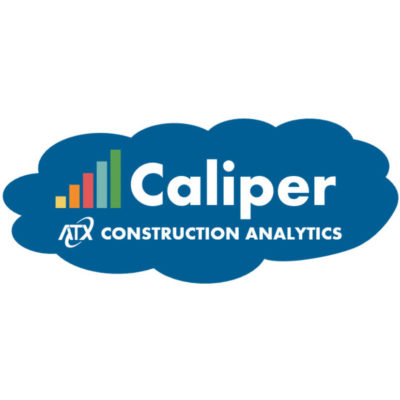As organizations grow, legacy systems reach a point of stagnation where they no longer meet the evolving needs of the business and show their age through inflexible data structures and outdated technology. When it comes time to implement a new software system, successfully migrating one’s data to a new platform (or platforms) is a critical step to ensure a project’s success. Properly executed data migration allows organizations to maintain continuity in their business flow by minimizing disruptions to day-to-day operations, which is a core concern for project leads and end-users during the “Go-Live” phase.
Without a structured and well-planned migration, companies risk data loss, inconsistencies, and operational downtime, which can negatively impact efficiency and employee buy-in. A smooth data migration ensures that the transition to a new system supports growth, innovation, and long-term success, while also building user confidence in the short-term. Before touching on the keys to successful data migration, it’s important to understand both its meaning in the context of software implementations, and in the types of data often migrated.
What is Data Migration?
Data migration refers to the process of transferring data from one system to another, typically from outdated legacy systems to modern software solutions. At a high level, the steps are:
1) Extracting data from older platforms
2) Transforming it to fit the structure and requirements of the new system
3) Loading that data into the new environment.
Migrating to modern software solutions allows organizations to leverage advanced capabilities such as real-time analytics, improved data accessibility, and enhanced security, ensuring that data continues to support business goals in an efficient and scalable way.
Why Companies Need Data Migration
-07.png?width=214&height=214&name=2025%20Q2%20Newsletter%20Images%20(Real)-07.png) There are several triggers that may drive the need for data migration. For instance, outdated systems may no longer be able to handle increasing data volumes or new operational requirements as businesses evolve, prompting the need for a system upgrade. In the case of mergers and acquisitions, data from multiple organizations must be integrated into a unified platform (sometimes on a rolling basis as more acquisitions occur) to ensure consistent operations – this is commonplace is the mechanical contracting space, for instance. Digital transformation initiatives, which aim to modernize an organization’s processes and technologies, often require moving data to more agile, cloud-based systems.
There are several triggers that may drive the need for data migration. For instance, outdated systems may no longer be able to handle increasing data volumes or new operational requirements as businesses evolve, prompting the need for a system upgrade. In the case of mergers and acquisitions, data from multiple organizations must be integrated into a unified platform (sometimes on a rolling basis as more acquisitions occur) to ensure consistent operations – this is commonplace is the mechanical contracting space, for instance. Digital transformation initiatives, which aim to modernize an organization’s processes and technologies, often require moving data to more agile, cloud-based systems.
To execute one of these initiatives, an organization must have a clear understanding of the exact data that needs to move and must ensure that thorough communication between its data leaders & the migration team is taking place. Without a clear understanding of the data that needs to be moved, any one of these projects risks leaving behind key data, which could result in last second migration efforts against a ticking clock, or a delay of the project’s “Go-Live” date.
A successful data migration can yield significant benefits such as improved data access, more powerful analytics, and greater operational efficiencies. With data housed in a modern system, businesses can drive quicker decisions using reporting insights that were previously unavailable, as well as streamline processes to increase productivity and competitiveness relative to their market.
Data Types & Planning
Before data can be moved into a new system, companies need to assess & indicate which data points need to be migrated and create a sequenced plan that facilitates their migration in the correct order. For instance, the typical migration sequence for a mechanical contracting firm may look something like this, give or take a few data points that a firm may or may not track:
- Customers & Vendors
- Service Locations/Sites
- Employee Records
- Inventory
- Equipment
- Jobs and/or Work Orders
- Contracts
- Purchase Orders & Sales Orders
- Accounts Receivable & Accounts Payable
Looking at this load order, one might notice that it mirrors the data hierarchy that will exist in the new system. Before sites can be imported, customer records must be loaded to host those sites. Before equipment can be imported, site records must be present to host those pieces of equipment. Before AR & AP can be loaded, the customers, vendors, jobs, purchase orders, etc. to which those transactions relate need to be present. Without the presence of higher-level data, lower-level data will have nothing (or fewer things) to attach itself to. As a result, many data import templates provided by modern software systems will not allow lower-level data to be imported without calling out the corresponding Customer ID, Vendor ID, etc. This hierarchy must be understood and charted out early in the project to ensure that once true migration begins, it is as seamless as possible.
Transactional vs. Non-transactional Data
These data types fall into two major categories – transactional & non-transactional data. Transactional data includes record-level financial transactions such as vendor bills and customer invoices, whereas non-transactional data includes records like the Customer, the Vendor, or the Site, which host billing addresses, contact information, payment & taxability codes, etc. Also included here are Contracts, Jobs, Work Orders, Equipment, and Inventory. These datapoints represent the relationship an entity has with its customers and vendors in terms of work and services performed, while transactional data represents the payment from one entity to another for those work and services. Understanding this distinction is critical in data migrations to ensure that historical transactions are preserved while foundational master data is properly structured in the new system.
The Data Migration Process
Once the plan has been established, data migration teams will begin coordinating with key owners on the migrating company’s staff to extract data from the legacy system for cleaning and reformatting into import templates. At this point, the migration team will begin cleaning data (formatting addresses to fit import templates, removing duplicate records from source exports, etc.) and then send import files back to key owners, who will validate the accuracy of the data in its new format. This validation is conducted in a sandbox or “test” instance of the new system, which gives users an opportunity to confirm their data is structured as needed to perform their business operations. Users’ in-system processes are also tested here, ensuring that by day one of Go-Live, the team is well-versed in how to perform their duties. Data validation by the migrating company is a mandatory step – no data should be imported that has not been verified for accuracy and greenlit by designated data owners.-08.png?width=308&height=308&name=2025%20Q2%20Newsletter%20Images%20(Real)-08.png)
Both in the planning phase & throughout data extraction, it is important to consider how each datapoint fits into the framework of the new system. Depending on the module structure, datapoints may need to be set up with different hierarchies than were previously anticipated, especially if there are unique processes that need to be translated. Teams that establish recurring check-ins between the data migration team and key-result owners are quicker to react to potential hiccups, improving their ability to resolve those hiccups as Go-Live approaches.
Strict adherence to a rigid methodology lessens the risk for extended project timelines, or last-minute imports of key datapoints that were missed in the initial discovery phase. Mitigating these risks requires rigorous testing, disciplined validation, and consistent communication to ensure clean production data and to earn operational confidence from users.
While an impending Go-Live date can feel daunting, a thorough data migration team following a detailed plan can overcome obstacles at any stage of the migration process, setting users and company stakeholders up for a seamless transition to their new system and its operational benefits.




